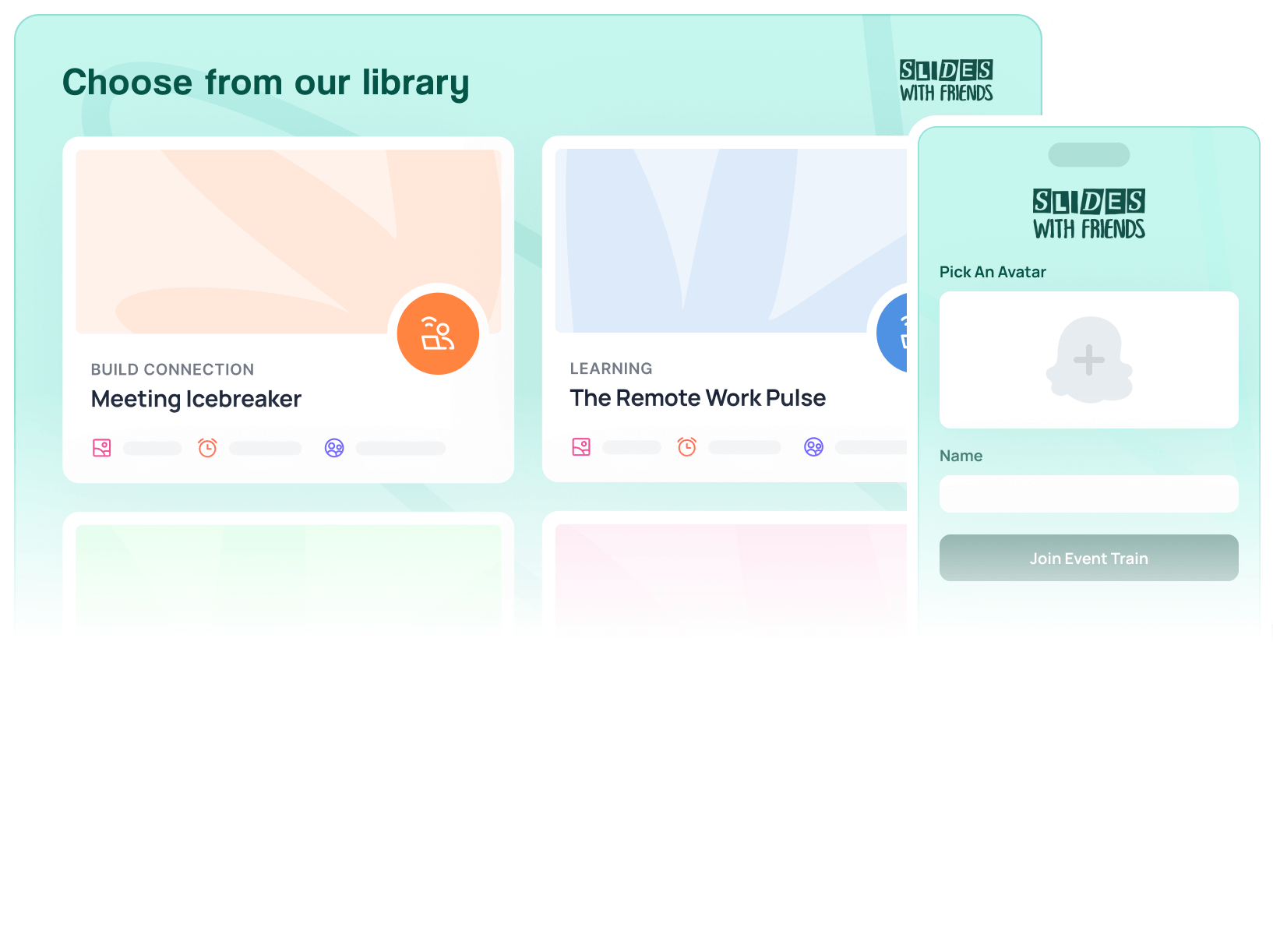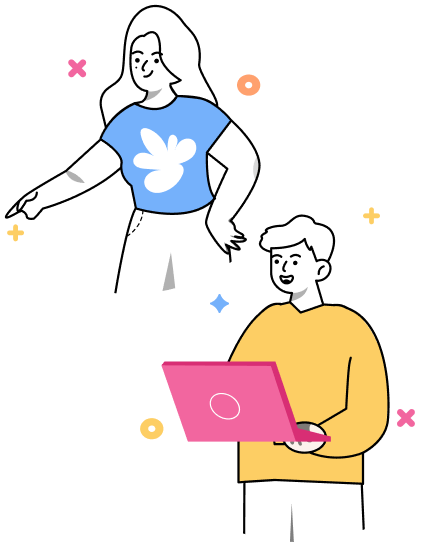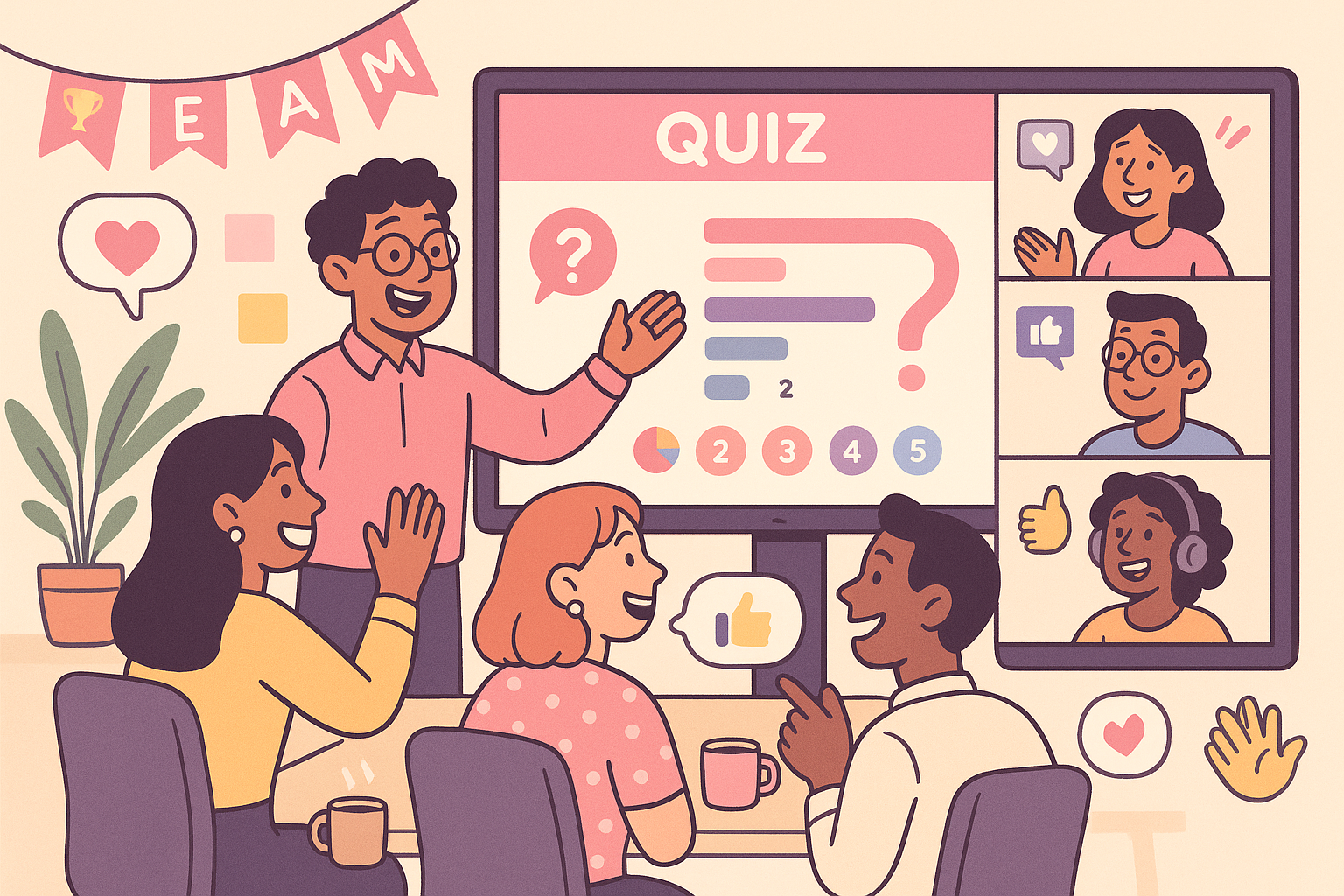The One Neat Trick to Increase Your Employee Engagement Survey Participation
Learn how to increase employee engagement survey participation with SlidesWithFriends! Turn boring surveys into fun experiences and make employees feel heard.

Getting employees to fill out engagement surveys can feel like pulling teeth. You send the email, wait for responses, and hear nothing. It's not that employees don't care; they just see these surveys as another task in their busy schedules. So, how to increase employee engagement survey participation? How do you make sure your team is interested in completing these surveys?
Do your survey live.
It’s not rocket science, but most managers say when they include the survey or questionnaire during the meeting, they get almost 100% response rate (compared to the low 20s!)
The power here is two parts: one, if you make it a social event, people have already carved out the time and will easily participate in what everyone else is also doing. And two, if you make the survey live and social, well, it’s more fun to do.
The Challenges of Traditional Surveys
Traditional survey methods often face low participation rates. Survey fatigue is a primary issue. Employees receive many surveys, leading to overload and disinterest. If surveys feel repetitive or similar, employees may not respond.
Boredom and length also factor in. If surveys are dull or too long, people are less likely to participate. Many employees see surveys as unrelated to their work or experiences. When questions seem disconnected from real workplace conditions, motivation to participate drops, leading to disengagement and low response rates.
Impact of Low Participation
Low employee survey participation can affect organizations in more than one way. A major issue is skewed data. Without engaged employees, there will be only a few answers, and the insights may not truly reflect the whole workforce's feelings. This can lead to wrong conclusions and actions that fail to address real needs.
Also, low participation means losing valuable feedback that could help identify areas for improvement or show employee satisfaction. Without this, the organization may struggle to make meaningful changes, affecting its ability to create a better work environment.
The Power of Live, Group, Interactive Surveys
Interactive surveys change how we gather feedback by focusing on engagement and user experience. They capture participants' attention with visuals, games, and interactivity, making the process interesting and encouraging participation.
Moreover, live, group, and interactive surveys build a cooperative environment. Participants can respond in real time and see the group's input, allowing for discussion and quick clarification of ideas. This approach increases engagement, ensures that feedback is well-rounded, and reflects the group's views.
These surveys can also provide quick feedback, letting employees or participants see the impact of their input and promoting a sense of involvement. This connection between feedback and action can increase motivation and inspire thoughtful contributions.
How to get 100% survey response rate (easily) (yes it’s possible)
Step 1: Put your live survey together
To manually create your poll, plan what topics you want to cover and the type of engagement you wish to generate. Use tools like PowerPoint or Google Slides to design your slide deck. For each slide, add a question and choose a poll type that aligns with your objectives, such as multiple-choice for quick insights or open text for detailed feedback. You can then manually create charts or graphs to display the results if you're looking for a visual representation.
For a more streamlined approach, consider using interactive software like SlidesWithFriends. This type of software simplifies the process, offering features such as customizable templates, editable icebreakers, real-time results, and automatic visualizations like word clouds and charts. It allows you to integrate different poll types seamlessly and even provides options for audience interaction, such as viewing who picked which answer.
Step 2: Hosting the Survey
Employee engagement surveys can be delivered through different methods, each offering benefits suited to workplace needs.
Live Sessions
Conducting surveys during engaging live sessions, like team meetings or events, creates a collaborative setting. This approach encourages participation and interaction, allowing employees to discuss their thoughts openly as they answer employee engagement survey questions. The immediate feedback reflects group sentiment and allows for deeper discussions on the survey issues. Clarifying questions on the spot can lead to more thoughtful responses, as employees feel more involved in the process and are less likely to skip questions.
Asynchronous Delivery
Alternatively, asynchronous surveys allow employees to participate when it suits them. This is useful for teams in different time zones or with varying schedules. With asynchronous surveys, employees can reflect on questions more thoroughly, offering insights at their own pace. This approach can result in higher completion rates as participants can choose a time when they feel ready to engage. Anonymity in online surveys can increase honesty in responses, as employees may feel more comfortable sharing their true feelings without immediate peer scrutiny.
Step 3: Analyzing and Sharing Results
Once your survey is hosted and responses are collected, the next step is to analyze the data and share the findings with participants. This shows their input is valued and that their voices matter. Sharing insights from the data helps your team or students connect and enjoy the content together. Encourage group interaction, as it brings people together, no matter where they are. Sharing survey results helps build a sense of community and encourages ongoing conversation, enriching collaboration within your organization. Highlight key trends, celebrate successes, and address any concerns to build trust and improve future participation in your engagement efforts.

Benefits of Using SlidesWithFriends for Surveys
Increased Participation Rates
The interactive nature of custom decks helps improve survey participation rates by making the feedback process more engaging. When employees see familiar gamification elements - like live polls, quizzes, and visually appealing slides - they are more likely to feel motivated and excited to participate. This approach makes surveys a dynamic event that engages employees.
Interactive decks also create a sense of connection among participants. As team members engage in real-time discussions and share their thoughts, they build a community atmosphere that encourages open dialogue and teamwork. This increased interaction leads to more enthusiastic participation and improves the quality of responses, as employees feel comfortable sharing their opinions and contributing to a larger purpose. Ultimately, the engaging format of custom decks changes survey participation from a chore to an activity people look forward to, providing actionable insights for the organization.
Better Quality of Feedback
Surveys create an environment where employees feel valued and heard, leading to more honest responses. When surveys include interactive elements, participants are more likely to approach questions positively. This format captures their attention and encourages reflection on their experiences and opinions. As employees engage in discussions or activities, they feel connected, prompting them to share insights without fear of judgment.
When surveys prioritize openness, such as through live sessions or anonymous platforms, participants are more comfortable expressing their feelings. This freedom from fear allows employees to provide honest and constructive employee feedback. As a result, organizations can gain insights to improve workplace culture and implement meaningful changes, leading to a more engaged and satisfied workforce.
Improved Team Morale and Engagement
Involving employees in an engaging process can improve morale and engagement beyond the survey itself. When employees actively participate in feedback, they see their contributions as valuable, creating a sense of involvement in their work environment. This involvement encourages open sharing of thoughts, ideas, and concerns.
The interactive nature of the surveys helps build stronger relationships among team members. As employees interact, they develop a sense of teamwork that can lead to better cooperation in daily tasks. This increased level of survey engagement can boost morale as employees feel more connected to their colleagues and invested in their team's success. When surveys are conducted in an engaging way, they support a positive workplace culture that encourages growth and satisfaction.
Increase Employee Engagement Survey Participation with SlidesWithFriends
Surveys play a key role in solving challenges linked to traditional feedback methods. SlidesWithFriends changes the survey process by making it more engaging and interactive. With features like live polls and quizzes, you will surely grab attention and increase employee engagement levels, encouraging them to share their insights. This approach creates a collaborative environment that supports ongoing improvement and builds a positive workplace culture.


Ready to ditch the dull, and run team sessions that people will actually enjoy?
Get started with a Slides with Friends deck in no time. We’ve got all the interactive features you need in one easy-to-learn, easy-to-set-up tool.















